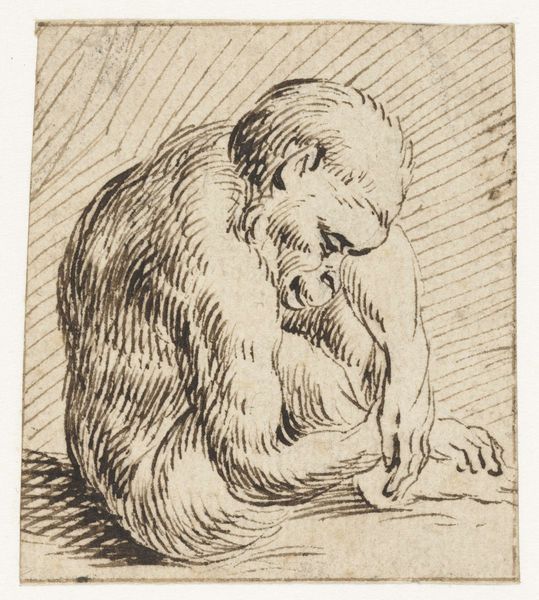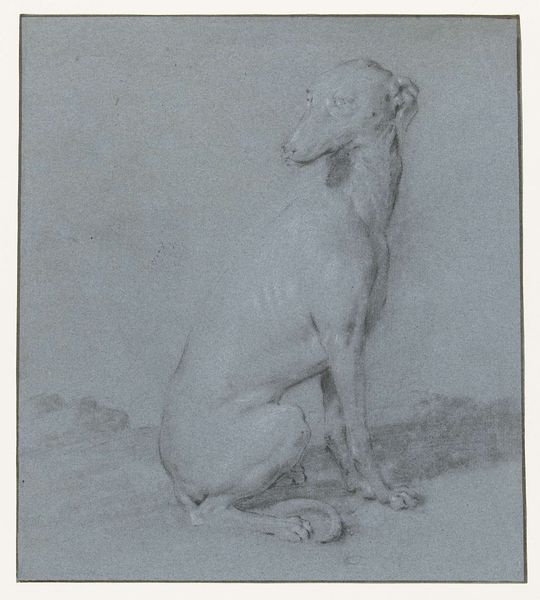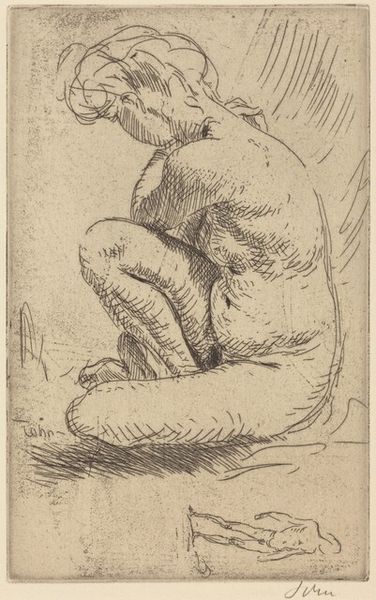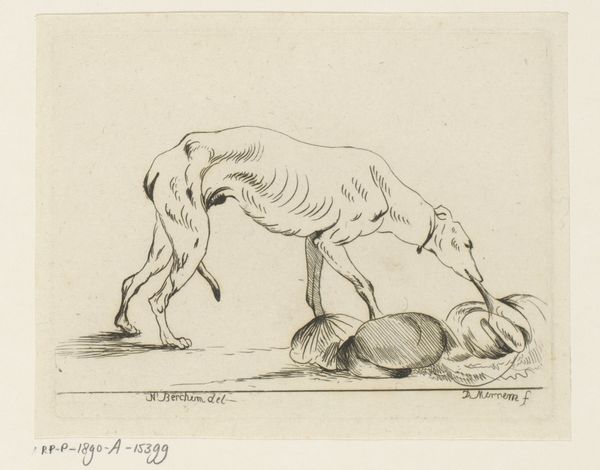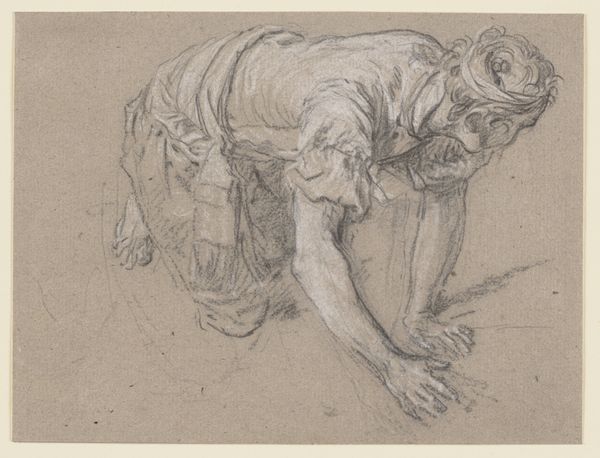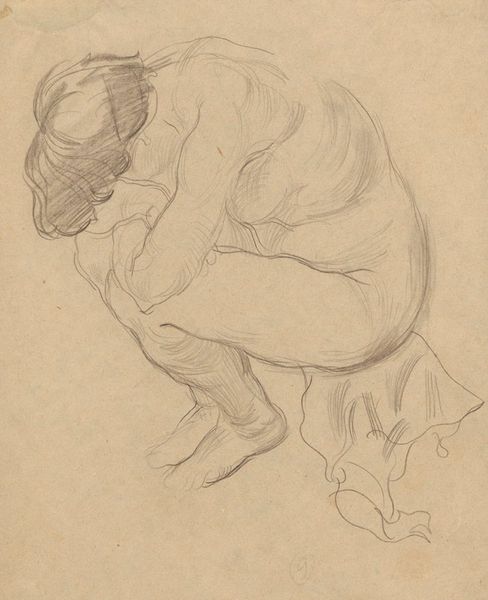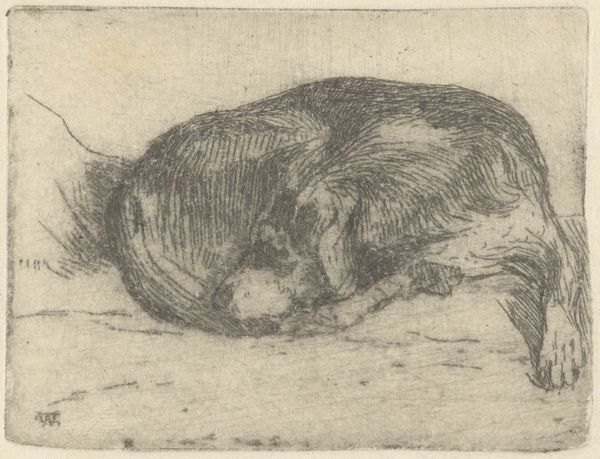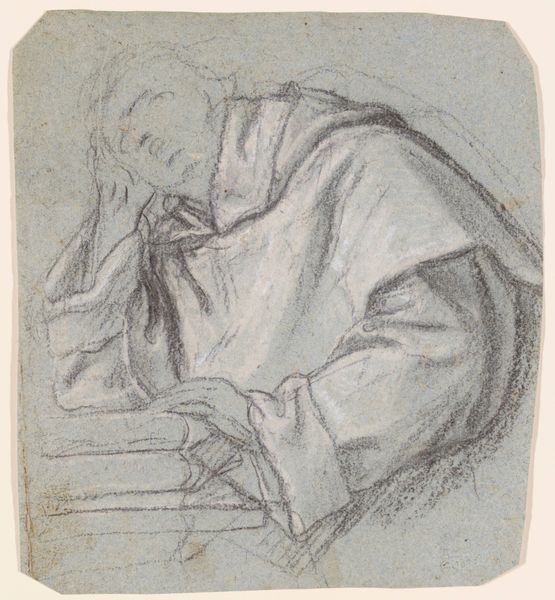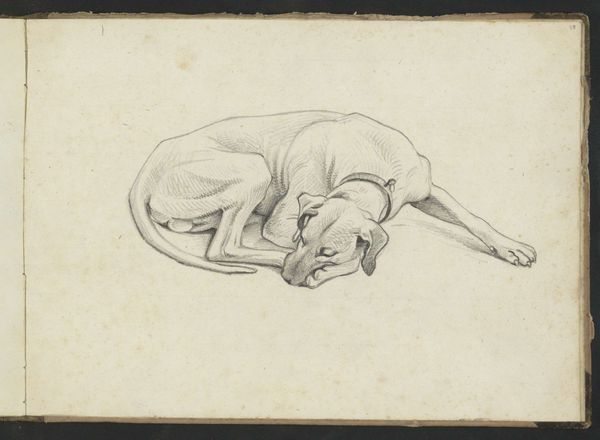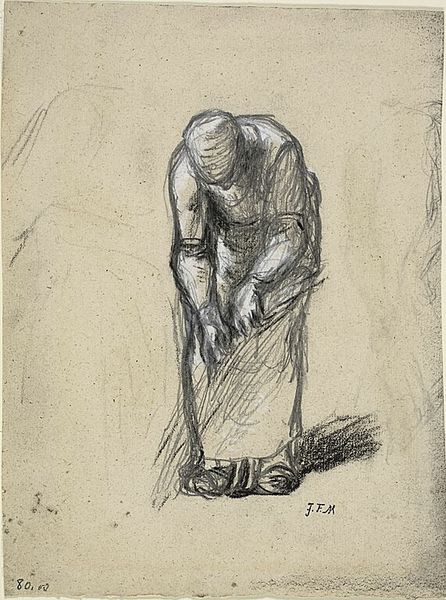
drawing, pencil, charcoal
#
drawing
#
baroque
#
charcoal drawing
#
figuration
#
pencil drawing
#
pencil
#
charcoal
#
realism
Dimensions: height 123 mm, width 147 mm
Copyright: Rijks Museum: Open Domain
Curator: Frans Snijders created this engaging drawing, "Een zittende hond die in zijn achterpoot bijt," sometime between 1589 and 1657. The artwork, rendered in pencil and charcoal, depicts exactly what the title suggests: a seated dog preoccupied with its hind paw. Editor: It's immediately striking how vulnerable the animal seems. The posture is so human-like, yet the act of biting, particularly focused on the foot, hints at an underlying anxiety. What strikes you about its social context? Curator: Well, depictions of animals were shifting during this era. While earlier portrayals often served symbolic purposes tied to heraldry or religious narratives, artists like Snijders began observing and capturing their subjects with more naturalism. This aligns with the burgeoning scientific spirit of the time. We see an exploration of anatomy, movement, and behavior, reflecting both a curiosity and, possibly, a shifting societal view on our relationship with animals. Editor: I agree that the piece showcases great anatomical realism, which raises fascinating questions about class and art's patronage. During the Baroque era, images of hunting dogs, animals of leisure, or even exotic specimens often appealed to wealthier patrons who desired imagery reflecting their elevated social status. Could this dog also represent some other socio-political element? Curator: Possibly. While seemingly a simple study, one can also explore deeper questions of social roles ascribed to the animal. The dog could stand for servitude or faithfulness. But you can't ignore the realism he brings to his paintings: a real movement towards understanding our fellow creatures! The fact it is a drawing should make it also easier to move through social constraints of art. Editor: Precisely. This is where drawing comes into its own, in a manner distinct from commissioned portraiture. I admire how Snijders captures a fleeting, unguarded moment, even something slightly abject. Perhaps in its seeming lack of imposed social messaging we actually glimpse something subversive. This isn’t a regal beast in some master's hunt. Instead, we witness an ordinary creature in its private experience. Curator: I think it serves as a poignant reminder to be aware of changes through ages: even how animals fit into the zeitgeist. Editor: Indeed. An enduring study that resonates far beyond the technical skill and beauty captured.
Comments
No comments
Be the first to comment and join the conversation on the ultimate creative platform.
